Leoncillo

© Galleria d'Arte Maggiore G.A.M., Bologna/Milano | Leoncillo, Amanti antichi, 1965, terracotta smaltata, cm. 80x180x40
From 27 January 2018 to 31 March 2018
Bologna
Place: Galleria d'Arte Maggiore G.A.M.
Address: via Massimo D'Azeglio 15
Times: lunedì dalle 16 alle 19.30; dal martedì al sabato dalle 9 alle 12.30 e dalle 16 alle 19.30
Ticket price: Ingresso gratuito
Telefono per informazioni: +39 051 235843
E-Mail info: info@maggioregam.com
Official site: http://www.maggioregam.com
Studying a new and evocative setting up, Galleria d'Arte Maggiore g.a.m. offers the opportunity to the public to rediscover the expressive strength of some unquestionable masterpieces by Leoncillo, such as the extraordinary sculpture “Amanti Antichi” from 1965. Exhibited in the unusual darkness of the Gallery's main room, this work recalls the typical Etruscan topos of the «Sarcophagus of the Spouses», re-elaborated by the artist using his characteristic Informal style, through which he can convey the intense inner trouble that has guided his whole art style. The show at Galleria d'Arte Maggiore g.a.m., which is also the headquarter of the Leoncillo Archive, is enriched by a selection of other important sculptures and works on paper, that are able to create a deep dialogue among each other and to depict a complete portrait of one of the most intense artists of the Twentieth century.
Born in Spoleto in 1915, Leoncillo’s artistic career has already started to achieve success from the Forties, when he takes part to the VII Triennale in Milan, invited by Gio Ponti, and when, in 1947, he signed the manifesto of the Nuova Secessione Artistica Italiana (New Italian Artistic Secession), then turned into Fronte Nuovo delle Arti. This was a movement known for the interest in the modernity that was running throughout Italy in the post-war period, and the openness to a dialogue with European styles. Alberto Moravia is the first to notice the “complicate and singular” neocubist-inspired art of Leoncillo, during the first exhibition of the Fronte. From 1948 the artist is soon protagonist of six editions of the Venice Biennale, but the most memorable of these is the one in 1954, during which an entire exhibition room is dedicated to him and Lucio Fontana together. Two years later, in 1956, Leoncillo is commissioned to realize the Monumento ai Caduti di tutte le guerre (Monument to the Fallen of all wars) in Albissola Marina, a silent testament composed by statues, wandering around like ghosts on an empty basement. Galleria d'Arte Maggiore shows in this exhibition a fine study for this monument. In these years Leoncillo is experiencing a period of existential, ideological and artistic crisis, a crisis that turns out to be a fundamental turning point for his maturation, causing his abandonment of the post-cubism and his approach to the informal language, and inspiring the creation of works that recall emotion and sense of nature. Sculptures like Taglio rosso (Red cut) from 1963, suspended between metaphor and memory, and the selection of works on paper here exhibited, show how the artist has been able to find in this language the perfect tool to express the deep and constant conflict that move his soul, and to reach international success in the early Sixties with exhibitions in Paris, New York, Lubiana, Naples and Montreal. The protagonist of the show, the sculpture Amanti antichi (Ancient Lovers), belongs to this period. The inspiration for this work is clearly from the Sarcophagus of the Spouses in Cerveteri, where the desire to immortalize forever the spouses' love gets in contrast with the decay due to the passing of time. Metaphor of time, love and death, according to Claudio Spadoni, the sculpture reveals the “trace of the corrosion, of a time that assembles things, the organic life and the inorganic world. [...] What is natural and what is unnatural are interwoven, they blend together and become blurred, solidified into presences where the past is recovered, in an existential and extremely aware condition. The awareness of human loneliness, of an individual fate that wears down, leaving a corroded trace in the sequence of events and in the whole reality”. This work has been loaned for many years to the Ministry of Foreign Affairs in Rome and exhibited in important shows in Italy and abroad, like INTUITION at the Museum of Palazzo Fortuny during the last Venice Biennale, just to mention the most recent one. Leoncillo suddenly passed away on 3 September 1968, leaving memory of his artistic poetry also in the precious pages of the Piccolo Diario (Little Diary), through which we can feel once again through his words the whole emotional intensity of his work: “Clay, my clay, my artificial matter, artificial but metaphorically full of everything I've seen, loved, everything I've been close, full of the things I have inside, things I gradually identified with, in the end."
Born in Spoleto in 1915, Leoncillo’s artistic career has already started to achieve success from the Forties, when he takes part to the VII Triennale in Milan, invited by Gio Ponti, and when, in 1947, he signed the manifesto of the Nuova Secessione Artistica Italiana (New Italian Artistic Secession), then turned into Fronte Nuovo delle Arti. This was a movement known for the interest in the modernity that was running throughout Italy in the post-war period, and the openness to a dialogue with European styles. Alberto Moravia is the first to notice the “complicate and singular” neocubist-inspired art of Leoncillo, during the first exhibition of the Fronte. From 1948 the artist is soon protagonist of six editions of the Venice Biennale, but the most memorable of these is the one in 1954, during which an entire exhibition room is dedicated to him and Lucio Fontana together. Two years later, in 1956, Leoncillo is commissioned to realize the Monumento ai Caduti di tutte le guerre (Monument to the Fallen of all wars) in Albissola Marina, a silent testament composed by statues, wandering around like ghosts on an empty basement. Galleria d'Arte Maggiore shows in this exhibition a fine study for this monument. In these years Leoncillo is experiencing a period of existential, ideological and artistic crisis, a crisis that turns out to be a fundamental turning point for his maturation, causing his abandonment of the post-cubism and his approach to the informal language, and inspiring the creation of works that recall emotion and sense of nature. Sculptures like Taglio rosso (Red cut) from 1963, suspended between metaphor and memory, and the selection of works on paper here exhibited, show how the artist has been able to find in this language the perfect tool to express the deep and constant conflict that move his soul, and to reach international success in the early Sixties with exhibitions in Paris, New York, Lubiana, Naples and Montreal. The protagonist of the show, the sculpture Amanti antichi (Ancient Lovers), belongs to this period. The inspiration for this work is clearly from the Sarcophagus of the Spouses in Cerveteri, where the desire to immortalize forever the spouses' love gets in contrast with the decay due to the passing of time. Metaphor of time, love and death, according to Claudio Spadoni, the sculpture reveals the “trace of the corrosion, of a time that assembles things, the organic life and the inorganic world. [...] What is natural and what is unnatural are interwoven, they blend together and become blurred, solidified into presences where the past is recovered, in an existential and extremely aware condition. The awareness of human loneliness, of an individual fate that wears down, leaving a corroded trace in the sequence of events and in the whole reality”. This work has been loaned for many years to the Ministry of Foreign Affairs in Rome and exhibited in important shows in Italy and abroad, like INTUITION at the Museum of Palazzo Fortuny during the last Venice Biennale, just to mention the most recent one. Leoncillo suddenly passed away on 3 September 1968, leaving memory of his artistic poetry also in the precious pages of the Piccolo Diario (Little Diary), through which we can feel once again through his words the whole emotional intensity of his work: “Clay, my clay, my artificial matter, artificial but metaphorically full of everything I've seen, loved, everything I've been close, full of the things I have inside, things I gradually identified with, in the end."
SCARICA IL COMUNICATO IN PDF
COMMENTI

-
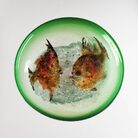 Dal 12 July 2025 al 24 November 2025
Venezia | Museo del Vetro
Dal 12 July 2025 al 24 November 2025
Venezia | Museo del Vetro
-
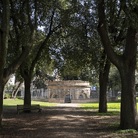 Dal 11 July 2025 al 21 September 2025
Roma | Loggia dei Vini - Villa Borghese
Dal 11 July 2025 al 21 September 2025
Roma | Loggia dei Vini - Villa Borghese
-
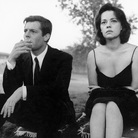 Dal 10 July 2025 al 10 August 2025
Roma | Palazzo Esposizioni Roma
Dal 10 July 2025 al 10 August 2025
Roma | Palazzo Esposizioni Roma
-
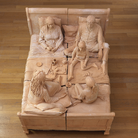 Dal 10 July 2025 al 3 November 2025
Casale Marittimo | Bolgheri, Castagneto Carducci, Casale Marittimo
Dal 10 July 2025 al 3 November 2025
Casale Marittimo | Bolgheri, Castagneto Carducci, Casale Marittimo
-
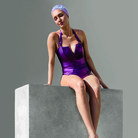 Dal 4 July 2025 al 21 September 2025
Roma | Palazzo Bonaparte
Dal 4 July 2025 al 21 September 2025
Roma | Palazzo Bonaparte
-
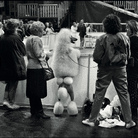 Dal 28 June 2025 al 21 September 2025
Roma | Palazzo Bonaparte
Dal 28 June 2025 al 21 September 2025
Roma | Palazzo Bonaparte


